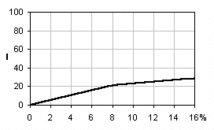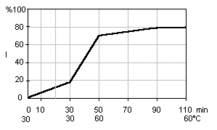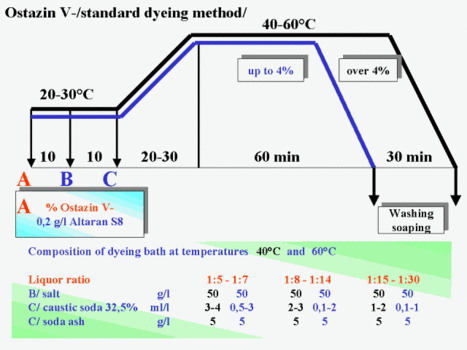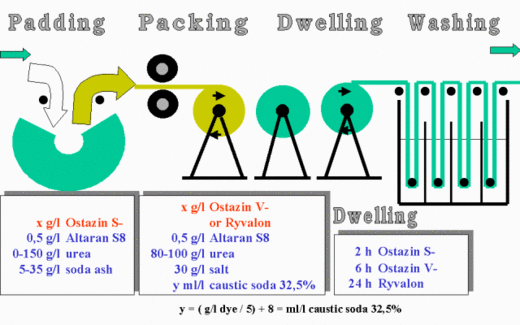dyes.synthesia.eu / Organic dyes / Textile dyes / OSTAZIN TURQUOISE V-G
OSTAZIN TURQUOISE V-G
|
Illustration on unmercerized fabric |
||
|
0,50% |
1,50% |
|
| Characteristic | |
| C. I. | Reactive Blue 21 |
| CAS No. | 73049-92-0 |
| Chemical Class |
Phthalocyanine |
| Properties | |
| Solubility (g/l at 25°C) | 50 |
| HT-dyeing of polyester/cotton fibre blends (two-bath dyeing) | suitable |
| Pad-Batch dyeing method | suitable |
| Levelling power | good to very good |
| Washing-off | good |
| Fastness | cotton | viscose | ||||||||||
| standard depth | 1/25 | 1/12 | 1/6 | 1/3 | 1/1 | 2/1 | 1/25 | 1/12 | 1/6 | 1/3 | 1/1 | 2/1 |
| Light Xenotest | 3-4Y | 3-4Y | 4Y | 4Y | 4Y | 4-5Y | 4Y | 4Y | 4Y | 4-5Y | 5Y | 5Y |
| standard depth | 1/1 | 1/1 | ||||||||||
| Washing 60°C | 4-5 | 4-5 | 4-5 | 4-5 | 4-5 | 4-5 | ||||||
| Washing E2S 95°C | 4 | 3-4 | 4-5 | 4 | 4 | 3-4 | ||||||
| Washing 95°C | 4 | 4-5 | 4-5 | 4 | 4-5 | 4-5 | ||||||
| Perspiration acid | 4-5 | 4-5 | 4-5 | 4-5 | 4-5 | 4-5 | ||||||
| Perspiration alkaline | 4-5 | 4-5 | 4-5 | 4 | 4-5 | 4-5 | ||||||
| Peroxide bleaching | 4-5 | 3-4 | 4-5 | 4 | 4-5 | 4 | ||||||
| Rubbing dry | 4-5 | 4-5 | ||||||||||
| Swimming pool water | 2 | 2D | ||||||||||
| Hot pressing dry immediately | 4Y | 4Y | ||||||||||
| Alkali | 3YD | 3Y | ||||||||||
| Mercerizing | 3* | 4-5 | 3R* | 4-5 | ||||||||
| Acetic acid | 3Y | 3-4Y | 4 | 4 | ||||||||
| Exhaustion curves |
| Saturation curve |
|
|
| Exhaustion curve |
|
|
| Application possibilities |
Ostazin V - Exhaustion dyeing 
|
|
|
| Ostazin V - Pad Batch |
|
|
 suitable suitable  partially suitable partially suitable  unsuitable unsuitable
|
| Testing methods | |||||||||||||||||||||||||||||||||||||||||||||||||||||||||||||||||||||||||||||||||||||||||||||||||||||||||||||||||||||||||||||||||||||||||||||||||||||||||||||||||||||||||||
|
|||||||||||||||||||||||||||||||||||||||||||||||||||||||||||||||||||||||||||||||||||||||||||||||||||||||||||||||||||||||||||||||||||||||||||||||||||||||||||||||||||||||||||
Detailed product information can also be saved in PDF format

News
19/12/2025 |
Synthesia
PF 2026
PF 2026
09/01/2025 |
Pigmens and Dyes
Synthesia will be presented at the European Coatings Show 2025
Synthesia will be presented at the European Coatings Show 2025
18/12/2024 |
Synthesia
PF 2025
PF 2025




